Egypt
Ethiopia’s Grand Ethiopian Renaissance Dam (GERD), announced in 2011, is designed to be the centerpiece of the country’s bid to become Africa’s biggest power exporter, generating more than 6,000 megawatts.
The dam has been at the center of a standoff between Egypt and Ethiopia, as the two nations disagree over the annual flow of water that should be guaranteed to Egypt and how to manage flows during droughts.
Following construction delays, Ethiopia has said GERD will start power production by the end of 2020 and be fully operational by 2022.
September 19,2019: Ethiopia rejects Egypt’s proposal
Ethiopia on Wednesday formally rejected a proposal by Egypt to operate a $4 billion hydropower dam the Horn of Africa country is constructing on the Nile, further deepening a dispute between the two nations over the project.
In a press conference in Ethiopia’s capital Addis Ababa, Sileshi Bekele, minister for water, irrigation and energy described Egypt’s plan including the volume of water it wants the dam to release annually as “inappropriate.”
“The proposal from Egypt was unilaterally decided…(it) didn’t consider our previous agreements,” he said.
“We can’t agree with this…we will prepare our counter proposal.”
Earlier this week, Egypt, which relies on the Nile for 90% of its fresh water, had sent a note to diplomats saying its proposal had been rejected by Ethiopia.
Egypt wants the GERD’s reservoir to release a higher volume of water than Ethiopia is willing to guarantee, among other disagreements.
“An Egyptian expert can’t control our dam,” Sileshi said and described the Egyptian plan as a potential violation of Ethiopia’s sovereignty.
Sileshi did not say how much water Ethiopia wants to release, but Egypt wants the dam to release a minimum of 40 billion cubic metres of water from the GERD annually.
Egypt complains
Talks between Egypt and Ethiopia over the latter’s dam project on the River Nile, have hit yet another deadlock, even as ministers from the two countries met with Sudan on Monday.
The meeting, which was the first in over a year, produced no agreements or disagreements, according to the spokesperson at Ethiopia’s foreign ministry, Nebiat Getachew.
In a note circulated to diplomats last week, Egypt says Ethiopia has “summarily rejected” its plan for key aspects of operating a giant dam the East African nation is building on the Nile.
Egypt added that it had also dismissed Ethiopia’s own proposal as “unfair and inequitable”.
The $4 billion Grand Ethiopian Renaissance Dam (GERD) was announced in 2011 and is designed to be the centerpiece of Ethiopia’s bid to become Africa’s biggest power exporter, generating more than 6,000 megawatts.
Egypt’s concerns
Egypt which gets around 90% of its fresh water from the Nile, considers the project as an existential threat.
The note distributed by the Egyptian foreign ministry, a copy of which was seen by Reuters, points to key differences over the annual flow of water that should be guaranteed to Egypt and how to manage flows during droughts.
Egyptian officials were not immediately available for comment, but Foreign Minister Sameh Shoukry has expressed unease in recent days over delays in negotiations.
Egypt says it shared its proposal for filling and operating the dam with Ethiopia and Sudan on July 31 and Aug. 1, inviting both countries for a meeting of foreign and water ministers.
“Unfortunately, in a letter dated August 12, 2019, Ethiopia summarily rejected Egypt’s proposal and declined to attend the six-party meeting,” the Egyptian government’s note said.
Ethiopia’s position
Ethiopia had instead proposed a meeting of water ministers to discuss a document that included an Ethiopian proposal from 2018, it said.
In January, Ethiopia’s water and energy minister said that following construction delays, the dam would start production by the end of 2020 and be fully operational by 2022.
The dam promises economic benefits for Ethiopia and Sudan, but Egypt fears it will restrict already stretched supplies from the Nile, which it uses for drinking water, agriculture and industry.
Sticking points
Both proposals agree that the first of five phases for filling the dam should take two years, at the end of which the GERD’s reservoir in Ethiopia would be filled to 595 metres and all the dam’s hydropower turbines would become operational.
But the Egyptian proposal says that if this first phase coincides with an extreme drought on Ethiopia’s Blue Nile, similar to that experienced in 1979-1980, then the two-year period should be extended to keep the water level at Egypt’s High Aswan Dam from dropping below 165 metres.
Without such a concession, Egypt says it would risk losing more than one million jobs and $1.8 billion in economic output annually, as well as electricity valued at $300 million.
After the first stage of filling, Egypt’s proposal requires a minimum annual release of 40 billion cubic metres of water from the GERD, while Ethiopia suggests 35 bcm, according to the Egyptian document.
The note cites Ethiopia as saying last month that Egypt’s proposal “put(s) the dam filling in an impossible condition”, a charge Egypt dismisses.
“The Ethiopian proposal … overwhelmingly favours Ethiopia and is extremely prejudicial to the interests of downstream states,” it says.
Risk of conflict
Though nationalist, sometimes belligerent rhetoric between Egypt and Ethiopia has cooled in recent years, the sides have remained deadlocked.
A report from International Crisis Group earlier this year warned that Egypt, Ethiopia and Sudan could “blunder into a crisis if they do not strike a bargain before the GERD begins operation”.
Ethiopia PM speaks out on colonial agreements governing NileREUTERS






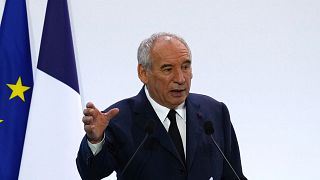
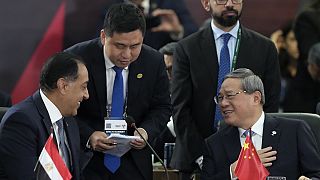
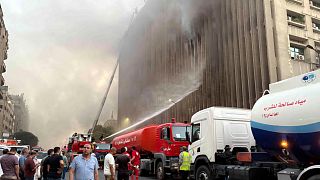

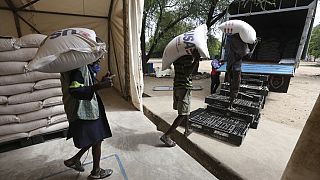
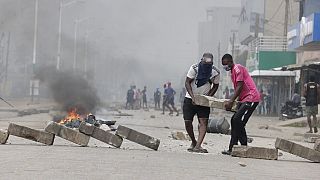
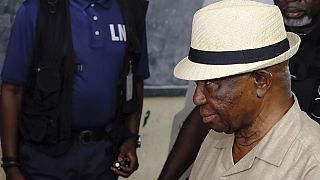
02:20
France: Avignon Festival celebrates Egyptian diva Umm Kulthum
01:42
Gaza conflict overshadows EU-Southern Neighbourhood talks in Brussels
01:14
Boeing reaches settlement with man who lost entire family in 737 MAX Crash
01:13
China and Ethiopia reaffirm alliance at meeting on sidelies of BRICS summit
01:05
Ethiopia's mega-dam on the Nile is "now complete", Prime Minister says
Go to video
Morocco: United Kingdom withdraws from renewable energy project